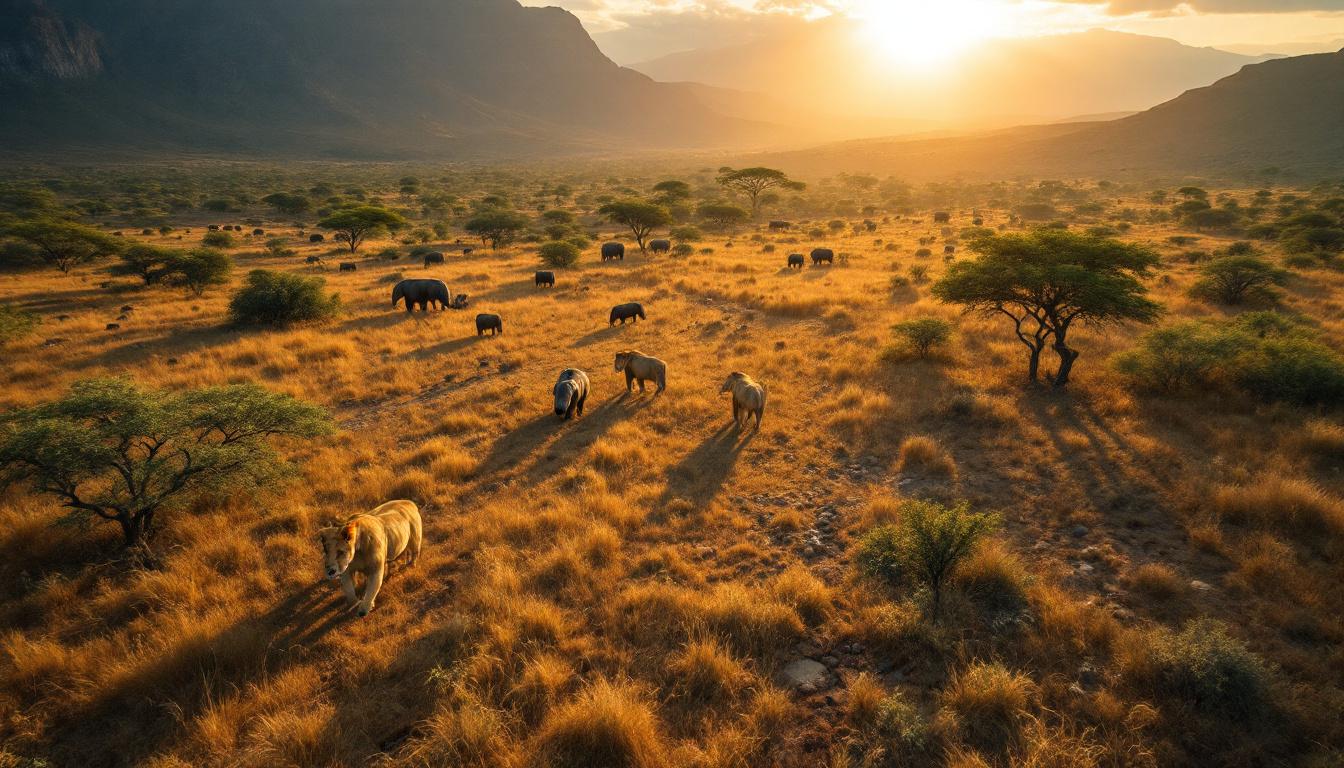Africa’s hidden wildlife sanctuary awaits at Tanzania’s Ngorongoro Crater, nature’s perfect arena where an extraordinary concentration of animals thrives within an ancient volcanic caldera. This 12-mile-wide natural enclosure, with walls towering 2,000 feet high, creates what many safari veterans consider Africa’s most reliable wildlife viewing experience.
Nature’s perfect wildlife sanctuary
Formed three million years ago when a massive volcano exploded and collapsed on itself, Ngorongoro Crater now serves as a natural enclosure for approximately 25,000 large animals. The crater’s unique microclimate and varied habitats – grasslands, forests, lakes, and marshes – sustain a remarkable diversity of wildlife year-round, unlike the seasonal migrations witnessed elsewhere in East Africa.
Home to the legendary Big Five
Wildlife enthusiasts travel thousands of miles for the rare opportunity to spot all of Africa’s Big Five (lion, elephant, buffalo, leopard, and rhino) in a single day. The crater hosts one of Africa’s densest lion populations and remains one of the last sanctuaries for the critically endangered black rhinoceros. Unlike other African natural wonders where wildlife can be elusive, Ngorongoro delivers consistent, extraordinary sightings.
Lake Magadi: flamingo paradise
At the crater’s heart lies Lake Magadi, a shallow soda lake that transforms into a shimmering pink canvas when thousands of lesser flamingos gather to feed. The alkaline waters create perfect conditions for the blue-green algae that give these birds their vibrant pink coloration. Sunrise at the lake offers photographers a magical moment as the first light catches the flamingos’ wings in flight.
“The crater provides a unique opportunity to witness Africa’s great wildlife spectacle contained within what feels like a perfect natural theater,” explains Joseph Meoli, a veteran Tanzanian safari guide with 15 years of experience in Ngorongoro.
Beyond wildlife: cultural encounters
The Ngorongoro Conservation Area is also home to the Maasai people, who have maintained their traditional semi-nomadic lifestyle for centuries. Unlike hidden cultural sites in Mali, many Maasai villages welcome visitors, offering authentic glimpses into their distinctive culture, including their famous jumping dances and intricate beadwork.
Best times to visit
The dry season (June to October) provides optimal wildlife viewing as animals concentrate around water sources. However, the green season (November to May) offers fewer crowds and lush landscapes that photography enthusiasts particularly appreciate. Unlike seasonal destinations in Greece, Ngorongoro offers remarkable experiences year-round.
Photographic paradise
The crater’s geography creates perfect lighting conditions for wildlife photography. Morning fog often blankets the crater floor, gradually burning off to reveal animals in the golden morning light. The bowl-shaped caldera means animals are frequently backlit against dramatic landscapes, creating opportunities for silhouette shots that capture Africa’s iconic imagery.
“What makes Ngorongoro special isn’t just the abundance of wildlife, but how they exist in this perfect natural arena where humans can observe without disturbing the natural rhythms,” notes wildlife photographer Sarah Coleman.
Practical considerations
While not offering underwater experiences like Fiji’s hidden islands or urban swimming like Australia’s coastal cities, Ngorongoro delivers unparalleled terrestrial wildlife viewing. Most visitors stay at lodges perched on the crater rim, offering breathtaking views. Early morning departures provide the best wildlife encounters before the midday heat sends animals seeking shade.
The crater’s magic lies in its concentrated wildness – a place where lions hunt against prehistoric backdrops and elephants trudge paths their ancestors have followed for millennia. In Ngorongoro, Africa’s wild heart beats stronger, offering visitors not just wildlife sightings but a profound connection to the continent’s primal essence.
